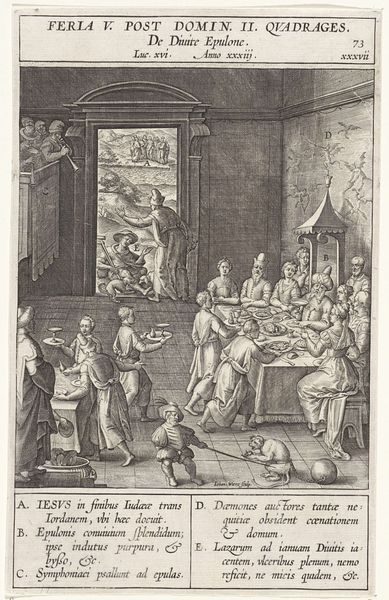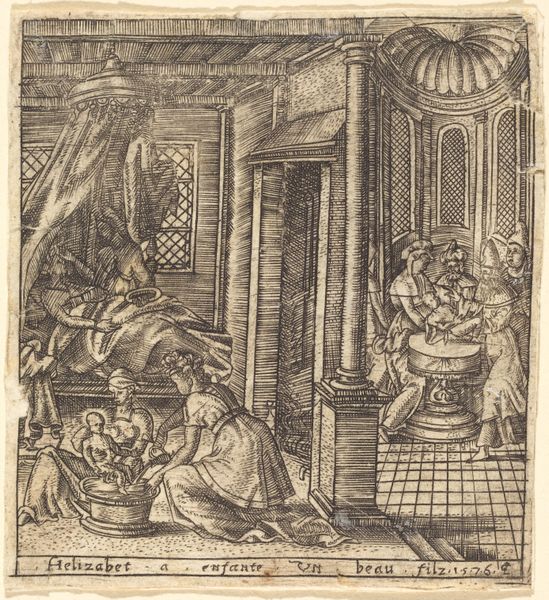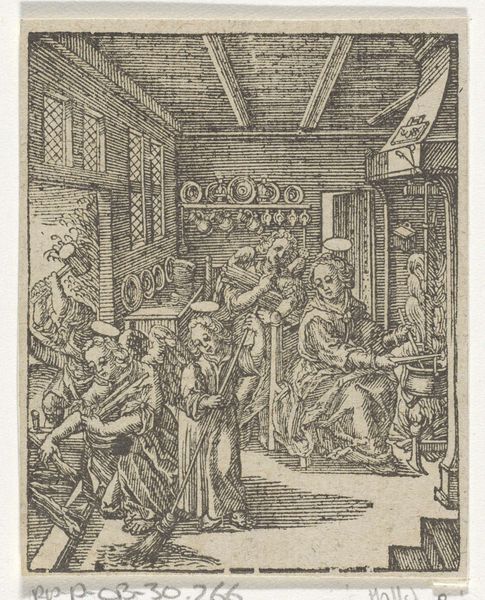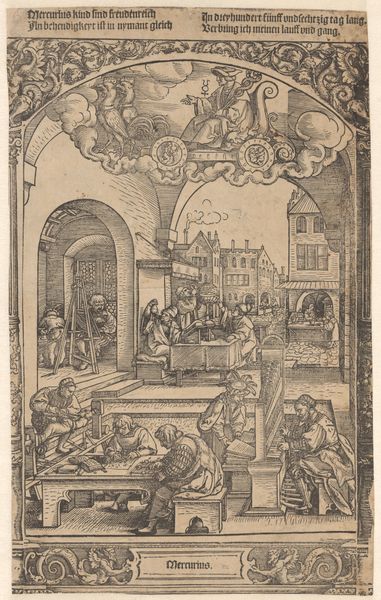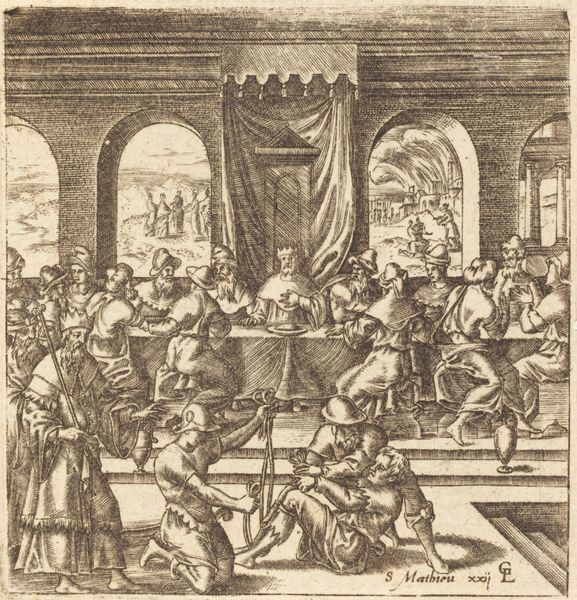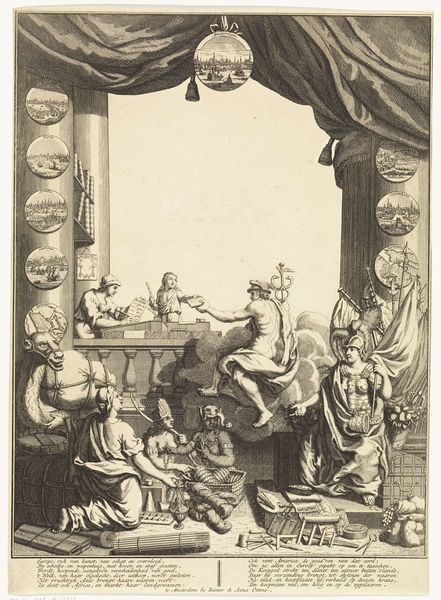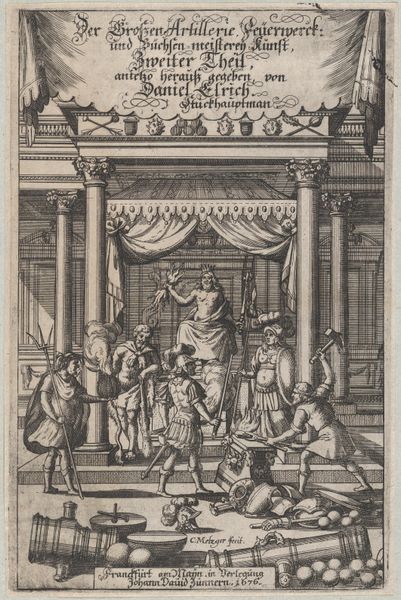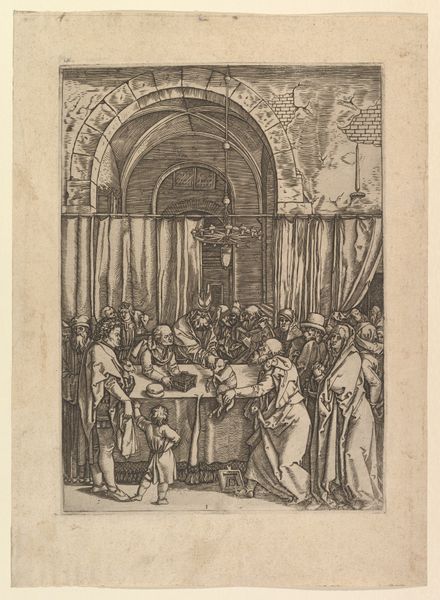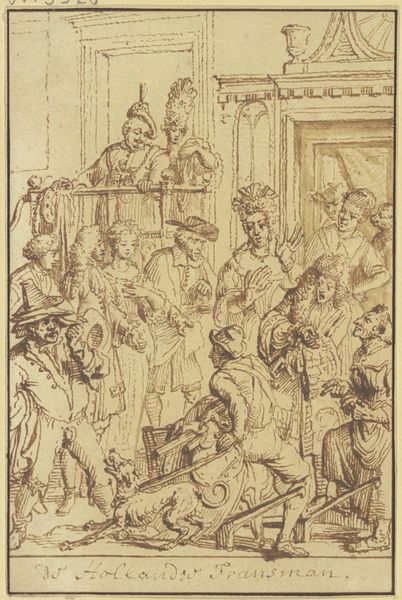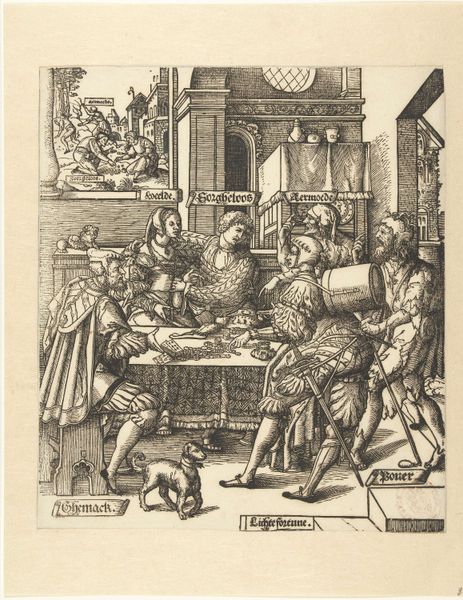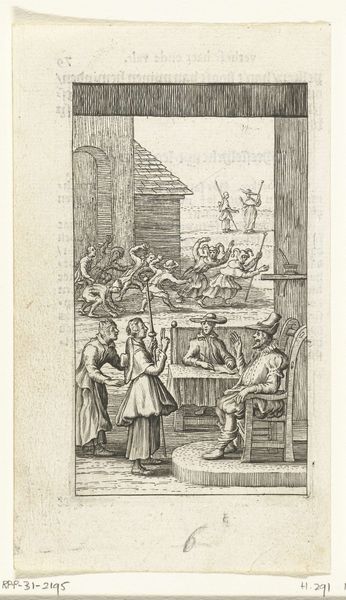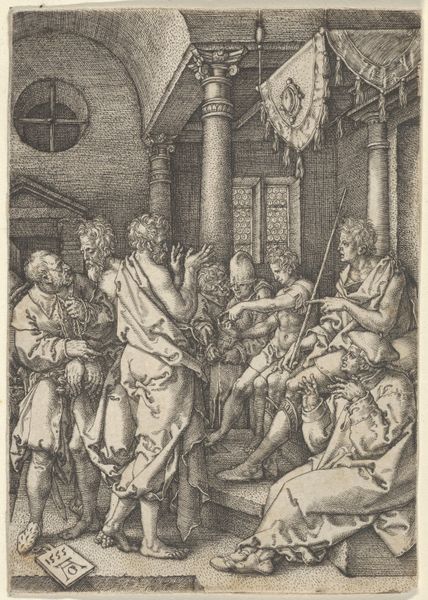
print, woodcut, engraving
#
narrative-art
#
baroque
# print
#
woodcut
#
genre-painting
#
engraving
Dimensions: 6 5/8 x 5 11/16 in. (16.83 x 14.45 cm) (image)
Copyright: Public Domain
Editor: Here we have an intriguing print, Lazarus at the House of the Rich Man, dating back to 1637. The artist remains anonymous, and the medium appears to be woodcut and engraving. I’m immediately struck by the stark contrast between the opulent interior and the glimpse we get through the doorway of what appears to be poverty. What's your take on it? Curator: It’s fascinating how this print engages with the public role of art. Look at the placement of the figures. Lazarus is literally at the doorstep, highlighting the social divide. This isn’t just a scene; it’s a commentary. How do you think the baroque style contributes to the political message? Editor: Well, the Baroque period is known for its drama and emotional intensity. The way the scene is arranged, almost staged, seems to amplify the disparity. The rich man's dismissive gesture, the abundance on the table – it all points to a societal critique. Curator: Precisely! The image of the rich man is presented, critiquing the existing socioeconomic system. Furthermore, prints like this were widely circulated, making art accessible beyond the elite circles. How does this accessibility affect our understanding of its purpose? Editor: I guess that means it was less about a single patron's taste and more about conveying a broader message to a wider audience, shaping public opinion, perhaps? Curator: Exactly. Consider the monkey and the dwarf, as well – they serve to diminish, to render farcical the world of riches. By employing common narratives in easily distributable forms, imagery has the power to persuade. Does thinking about the political climate of the time shift how you view it now? Editor: Absolutely. Knowing it was meant for broader consumption reframes my perspective. I now see it as more of a social call to action. Curator: I agree. This artwork prompts us to analyze socio-political history and how these considerations influence art’s reception. It is about class difference. Editor: It's been very eye-opening. Thanks to understanding the historical context, it shifted my focus entirely. Curator: And I'm left thinking more deeply about art’s capacity to be an agent for societal change.
Comments
No comments
Be the first to comment and join the conversation on the ultimate creative platform.
